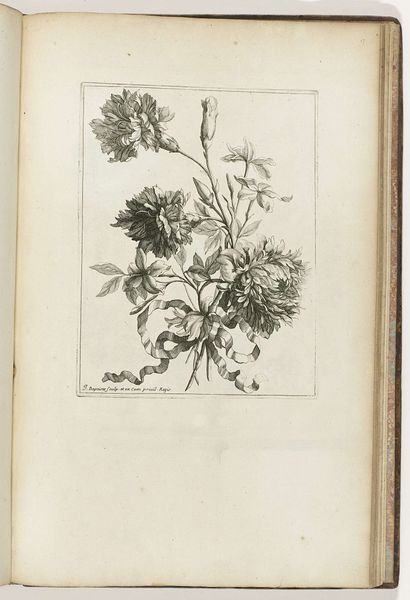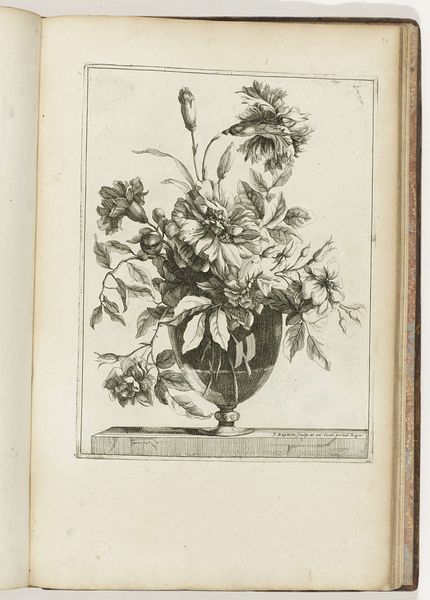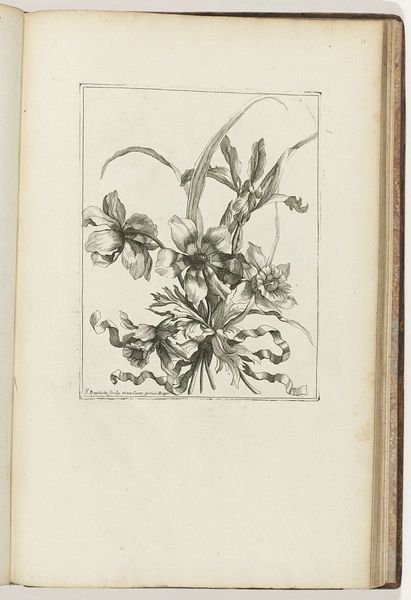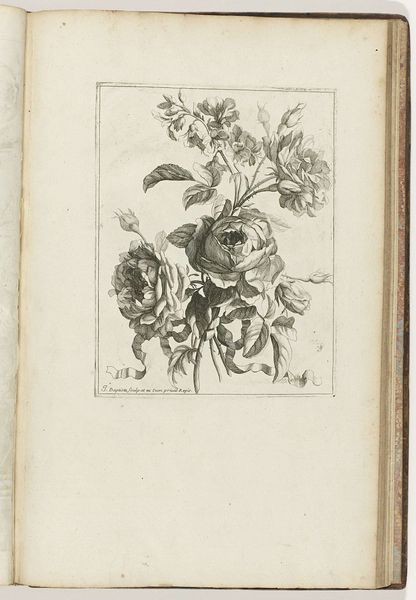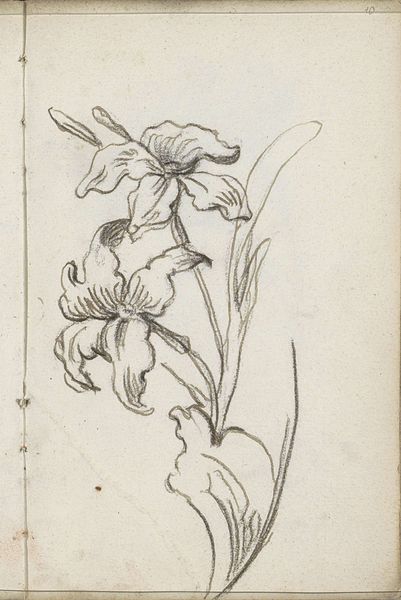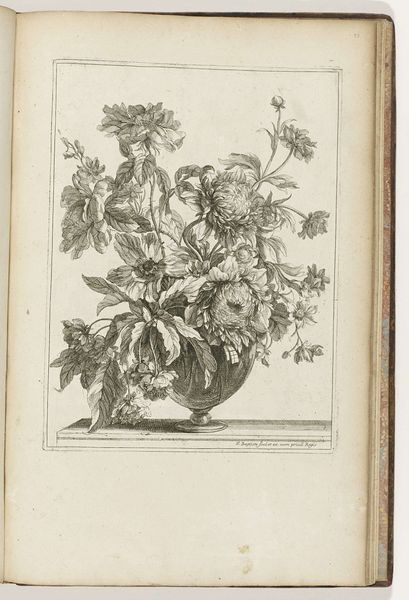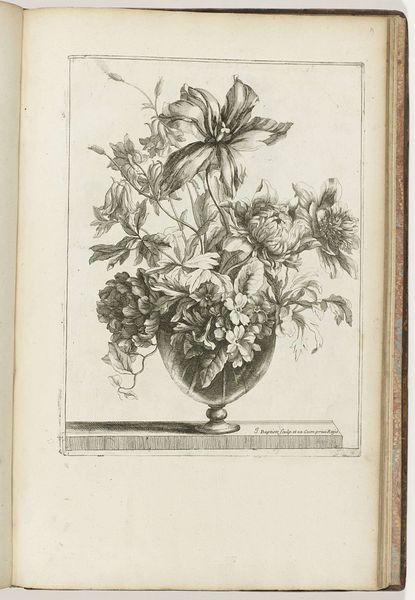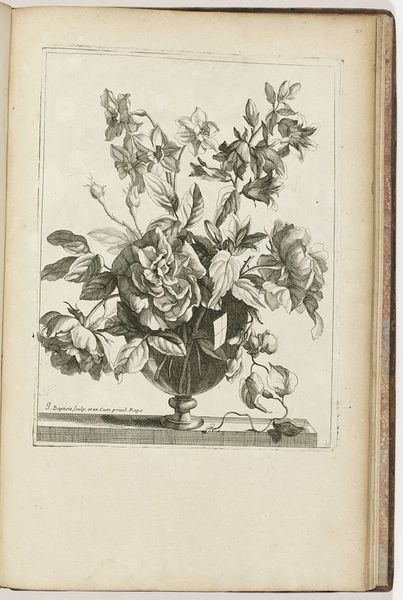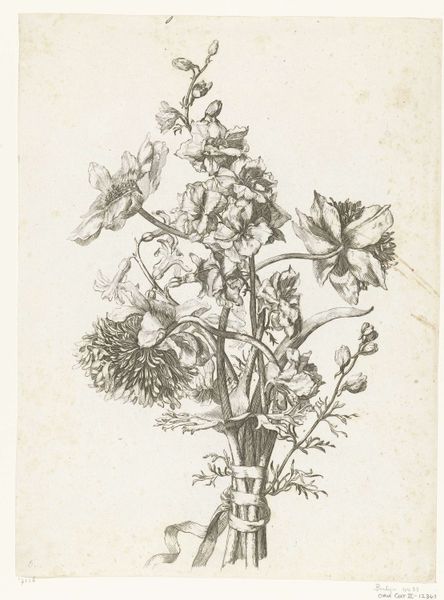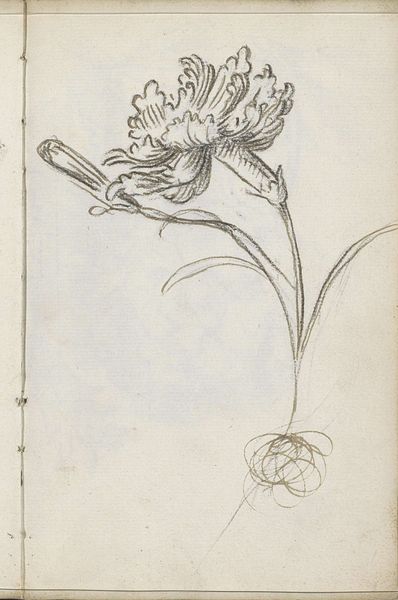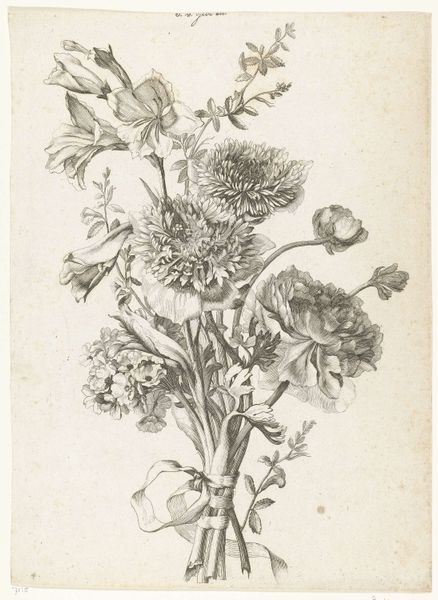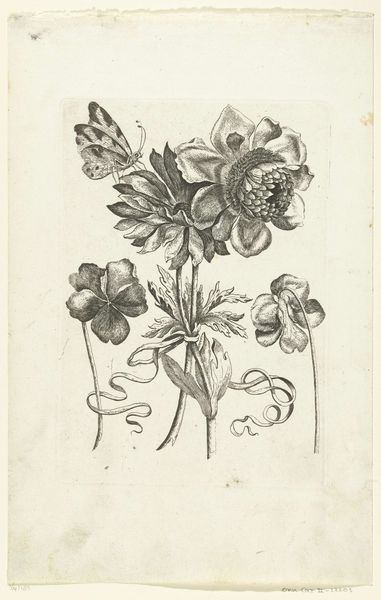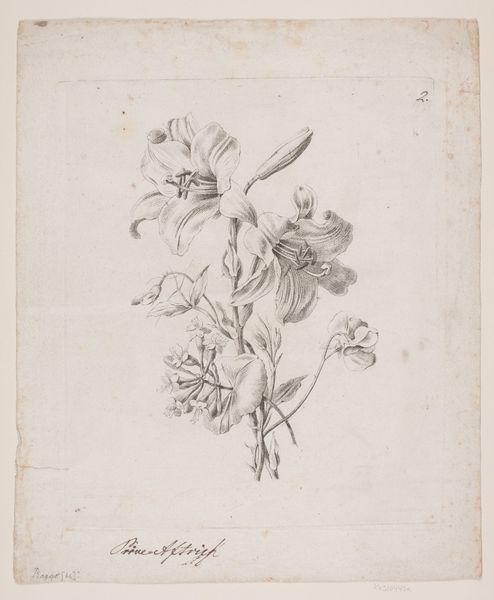
drawing, print, etching
#
drawing
#
baroque
# print
#
etching
#
figuration
#
line
Dimensions: height 227 mm, width 175 mm
Copyright: Rijks Museum: Open Domain
Jean-Baptiste Monnoyer created this unbound bouquet using pen in the late 17th century. As a still life painter in France, Monnoyer was known for his flower pieces, tapestries, and decorative panels and was influenced by the Dutch flower painters. This drawing, with its delicate lines and carefully observed details, reflects the 17th-century interest in naturalism and scientific observation. Yet, it also speaks to the social function of art, particularly the rise of the decorative arts within courtly circles. France, at the time, was under the firm grip of Louis XIV, who used art and architecture to glorify his reign and project an image of power and wealth. Artists like Monnoyer catered to the aristocracy, producing works that celebrated luxury and refinement and reinforcing the social hierarchy. Looking at this image, we can use archival documents, such as letters, inventories, and exhibition catalogs, to understand the market for such works, the social status of the artist, and the evolving taste of the French elite. Through such historical research, the meaning of art is always contingent on its social and institutional context.
Comments
No comments
Be the first to comment and join the conversation on the ultimate creative platform.
